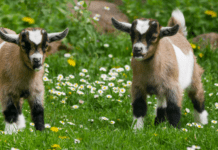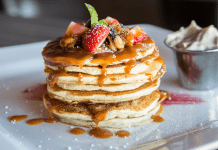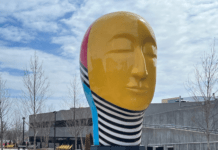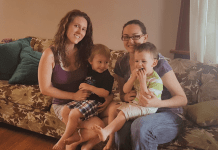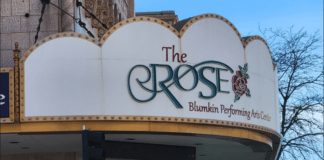Although Dr. Seuss’s birthday was a couple of weeks ago and the media has moved on from the controversy, I haven’t been able to get Dr. Seuss out of my mind.
I grew up loving Dr. Seuss books—the catchy rhymes, the funny characters, and silly stories had me mesmerized. I loved Dr. Seuss so much, that even before I became pregnant with our first child, I knew their nursery would be Dr. Seuss-themed.
So when my first daughter came along in 2013, my mom made a beautiful Dr. Seuss quilt, I found matching sheets and decor, and my aunts threw me a Dr. Seuss-themed baby shower.
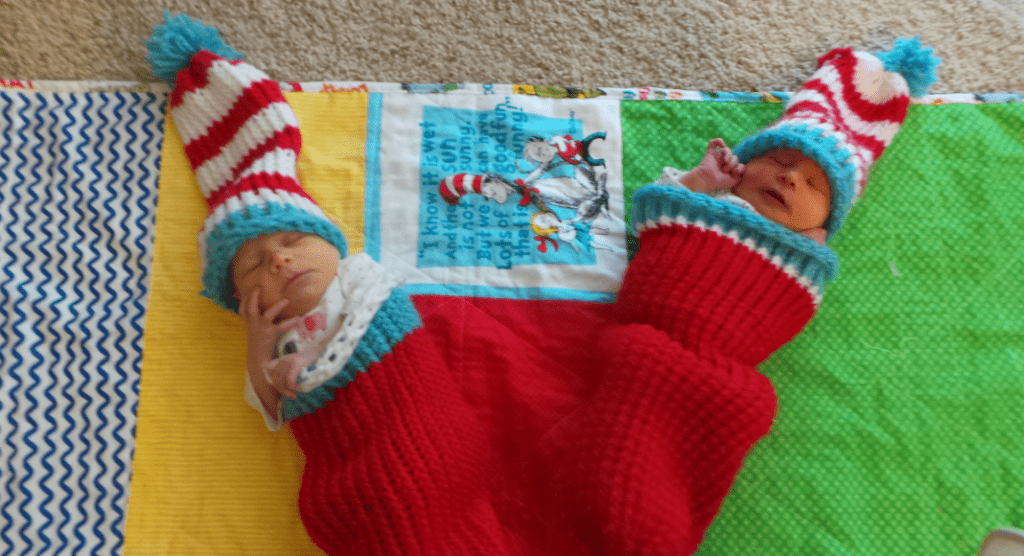 When I found out I was pregnant with twins, I immediately started planning their Thing 1 and Thing 2 costumes for their first Halloween, with big sister as the Cat and the Hat. All four of my girls experienced the Dr. Seuss nursery and each of their first birthday parties were Dr. Seuss-themed (this was mostly out of convenience of having all the decor/supplies already on hand!)
When I found out I was pregnant with twins, I immediately started planning their Thing 1 and Thing 2 costumes for their first Halloween, with big sister as the Cat and the Hat. All four of my girls experienced the Dr. Seuss nursery and each of their first birthday parties were Dr. Seuss-themed (this was mostly out of convenience of having all the decor/supplies already on hand!)
They were given Oh the Places You’ll Go as babies, we watch The Grinch every Christmas, and the rhymes of Green Eggs and Ham have helped my children as they learned to read. To put it mildly, we were big Dr. Seuss fans.
However, I am also a socially conscious person trying to raise socially conscious kids, so when I learned more about Dr. Seuss and his racist beliefs and how these racist beliefs seeped into some of his works, I knew I had to confront this truth. I realized that I was reading all of Dr. Seuss’s works as a privileged white child (now parent) who saw myself positively reflected in the characters of Cindy Lou Who and Sally Walden.
I never considered what images were lacking from the children’s books I read; I never considered what it must feel like as a child of color to pick up these “classics” and not see yourself represented. And although I am not familiar with the six books that are no longer being published by Dr. Seuss Foundation, I can not imagine what it must be like for children of color who pick up a book and realize that the only characters who look like them are being portrayed in negative, stereotypical, and discriminatory ways.
When I read the research study that highlights Dr. Seuss’s racist ideas, I had, what I thought at the time, was two choices.
I have seen these two choices play out on social media over the past two weeks.
My first choice would be to become defensive. I could argue that Dr. Seuss is harmless and his books are classic and there is nothing harmful or damaging about Dr. Seuss and that Dr. Seuss is the latest victim of “cancel culture.”
My other choice was to find every Dr. Seuss book, blanket, and other paraphernalia in the house and throw it away, to feel extremely guilty that I ever liked Dr. Seuss in the first place, and never mention Dr. Seuss or his books to my children ever again.
Neither of these choices felt right to me, so I have been grappling with finding a third option that feels appropriate as a parent who is committed to raising anti-racist, socially conscious, critically thoughtful kids.
 So, I decided not to become defensive; I do believe Dr. Seuss should be held accountable for his racist ideas, and I recognize how his books (as well as countless others) are harmful and damaging to children.
So, I decided not to become defensive; I do believe Dr. Seuss should be held accountable for his racist ideas, and I recognize how his books (as well as countless others) are harmful and damaging to children.
I decided to talk to my girls about Dr. Seuss—I told them that although Dr. Seuss has some really great, funny books, he also was someone who believed Black people and other people of color were not as good as white people. He wrote some mean things about people of color in some of his books. We talked about how people can have both good ideas and bad ideas and that whenever we see people saying bad things or mean things about other people, we should tell them to stop.
My kids are 3, 5, 5, and 7, so I am not sure how much they absorbed from this conversation, but I thought it was important to start the conversation. Instead of throwing out all Dr. Seuss’s books, I am committing myself to expand my children’s library.
When checking out books from the library, I am encouraging my children to find books with people who look different from them. When purchasing books, I am committing to buying from Black-owned businesses and buying books from authors of color that feature non-white characters. And when I read The Cat and the Hat, I am going to ask my girls why Sally and Sam are white and why there aren’t any Black characters in many of the books we own.
I am going to resist the temptation to become either defensive or guilt-ridden, and instead, I am hobbling along on the third path of hard conversations with myself and my kids, while expanding the diversity of their literature and encouraging and supporting others who are muddling through the third path, too.
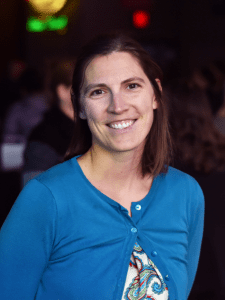 Guest Contributor: Allison Kinney-Walker
Guest Contributor: Allison Kinney-Walker
Allison Kinney-Walker is a mom to four girls: Emma, Addy, Lily, and Leia. She is originally from Des Moines, Iowa, but has called Omaha home for 15+ years. Allison is also a professor at Nebraska Methodist College and is passionate about anti-racism efforts.



